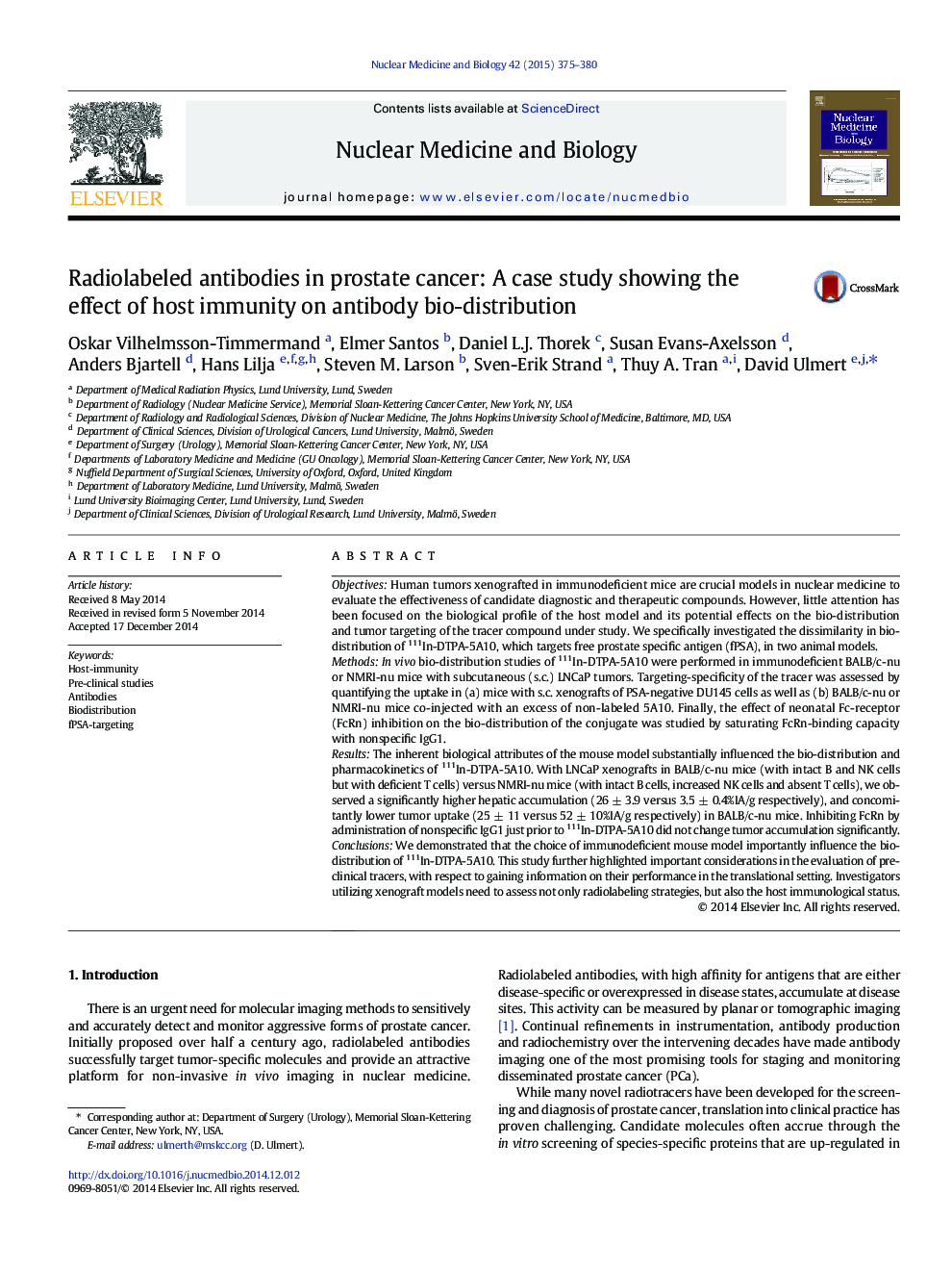| Article ID | Journal | Published Year | Pages | File Type |
|---|---|---|---|---|
| 2153462 | Nuclear Medicine and Biology | 2015 | 6 Pages |
ObjectivesHuman tumors xenografted in immunodeficient mice are crucial models in nuclear medicine to evaluate the effectiveness of candidate diagnostic and therapeutic compounds. However, little attention has been focused on the biological profile of the host model and its potential effects on the bio-distribution and tumor targeting of the tracer compound under study. We specifically investigated the dissimilarity in bio-distribution of 111In-DTPA-5A10, which targets free prostate specific antigen (fPSA), in two animal models.MethodsIn vivo bio-distribution studies of 111In-DTPA-5A10 were performed in immunodeficient BALB/c-nu or NMRI-nu mice with subcutaneous (s.c.) LNCaP tumors. Targeting-specificity of the tracer was assessed by quantifying the uptake in (a) mice with s.c. xenografts of PSA-negative DU145 cells as well as (b) BALB/c-nu or NMRI-nu mice co-injected with an excess of non-labeled 5A10. Finally, the effect of neonatal Fc-receptor (FcRn) inhibition on the bio-distribution of the conjugate was studied by saturating FcRn-binding capacity with nonspecific IgG1.ResultsThe inherent biological attributes of the mouse model substantially influenced the bio-distribution and pharmacokinetics of 111In-DTPA-5A10. With LNCaP xenografts in BALB/c-nu mice (with intact B and NK cells but with deficient T cells) versus NMRI-nu mice (with intact B cells, increased NK cells and absent T cells), we observed a significantly higher hepatic accumulation (26 ± 3.9 versus 3.5 ± 0.4%IA/g respectively), and concomitantly lower tumor uptake (25 ± 11 versus 52 ± 10%IA/g respectively) in BALB/c-nu mice. Inhibiting FcRn by administration of nonspecific IgG1 just prior to 111In-DTPA-5A10 did not change tumor accumulation significantly.ConclusionsWe demonstrated that the choice of immunodeficient mouse model importantly influence the bio-distribution of 111In-DTPA-5A10. This study further highlighted important considerations in the evaluation of preclinical tracers, with respect to gaining information on their performance in the translational setting. Investigators utilizing xenograft models need to assess not only radiolabeling strategies, but also the host immunological status.
